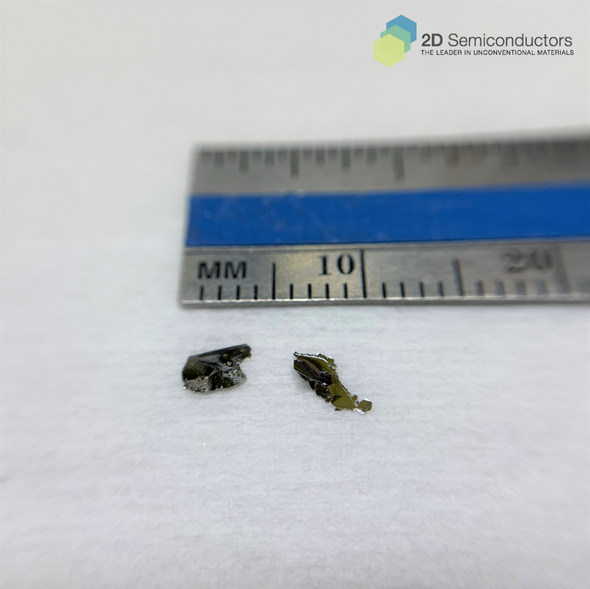Description
Germanium disulfide (GeS2) is a promising anisotropic semiconductor with unique vdW structure as shown in our product description. GeS2 vdW crystals were grown using chemical vapor transport technique at high pressures and temperatures over 2 months to ensure high crystallinity and vdW nature. The crystals large is size and measure ~1cm in size. The crystal itself exhibits unique layered vdW form with quasi-1D or anisotropic ribbon like structure much like in ReS2, ReSe2, or TiS3. Many of its properties are still not well established in bulk and remains unknown from few-layer to monolayers.
The characteristics of GeS2 vdW crystals
| Sample size | see image above (~1cm in size) |
| Properties | 2D semiconductor |
| Crystal structure | Monoclinic phase |
| Unit cell parameters | a=6.87Å, b=12.55Å, c=16.45Å, α=β=90° γ=91.04° |
| Growth technique | Chemical vapor transport |
| Purity | 99,9995% purity SIMS confirmed |
| Production method | SEM, EDS, Raman |
| Environmental stability | Stable |
Additional Information
Elements: |
Ge,S |
Element: |
Germanium |
Element: |
Sulfur |
Formula: |
GeS |
Material class: |
MX |
Properties: |
Semiconductor |
Band gap range: |
VIS |
Growth method: |
Flux |
Growth method: |
CVT |
Doping: |
Undoped |













